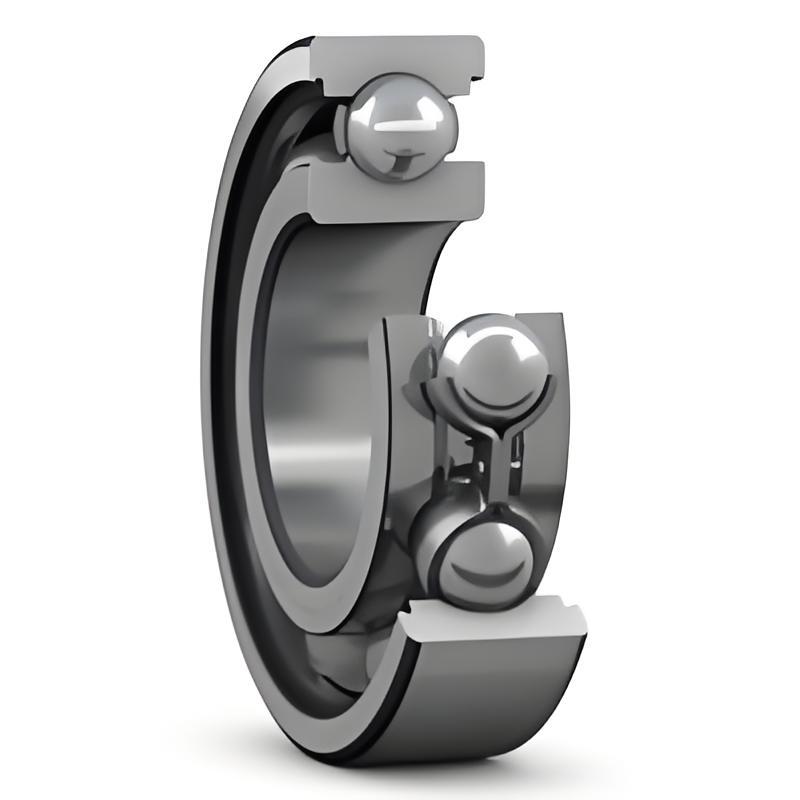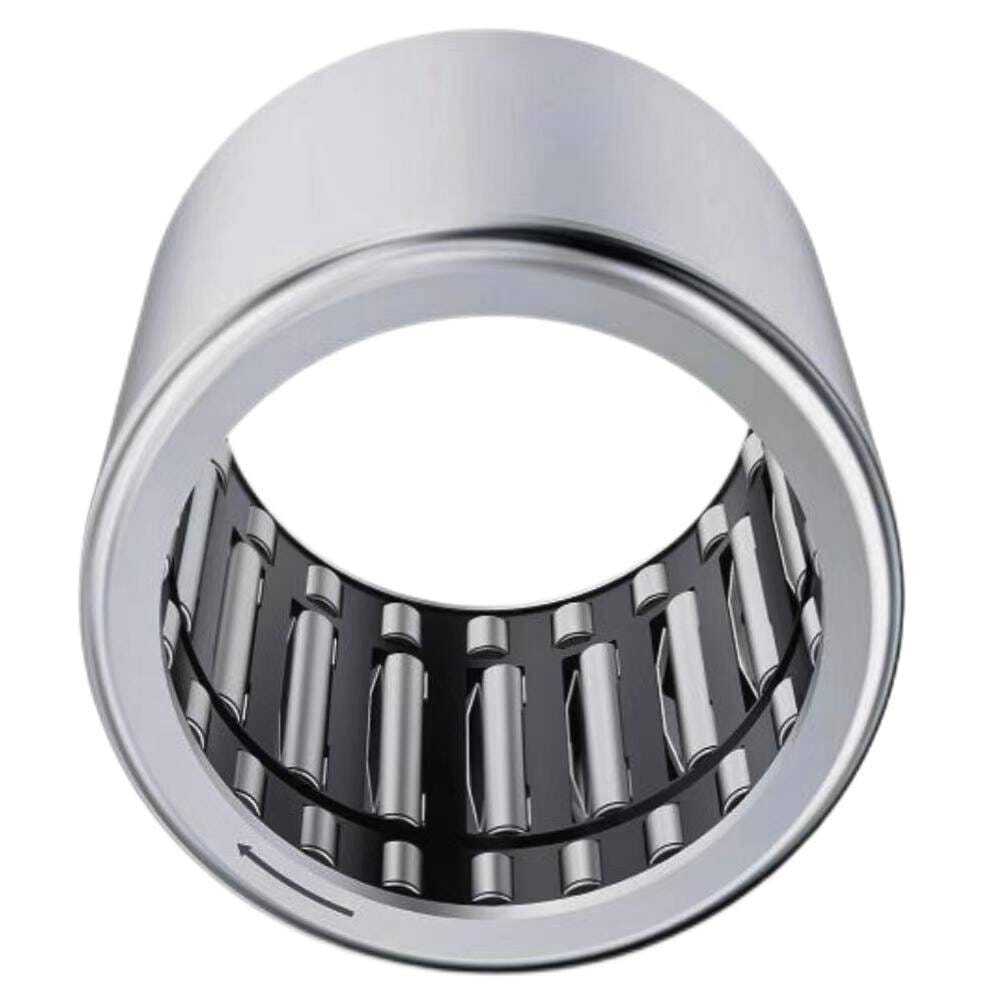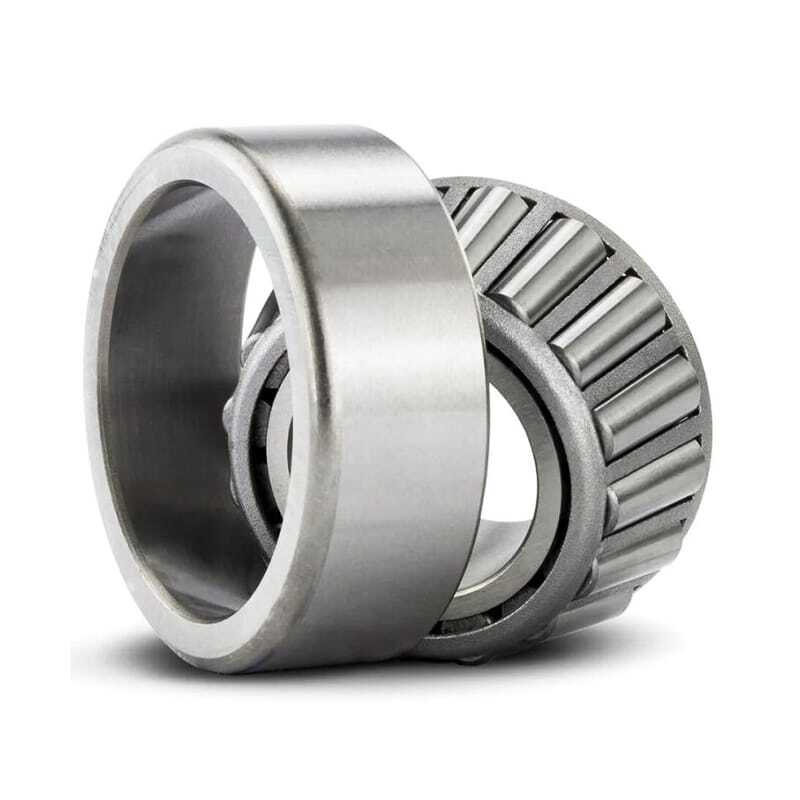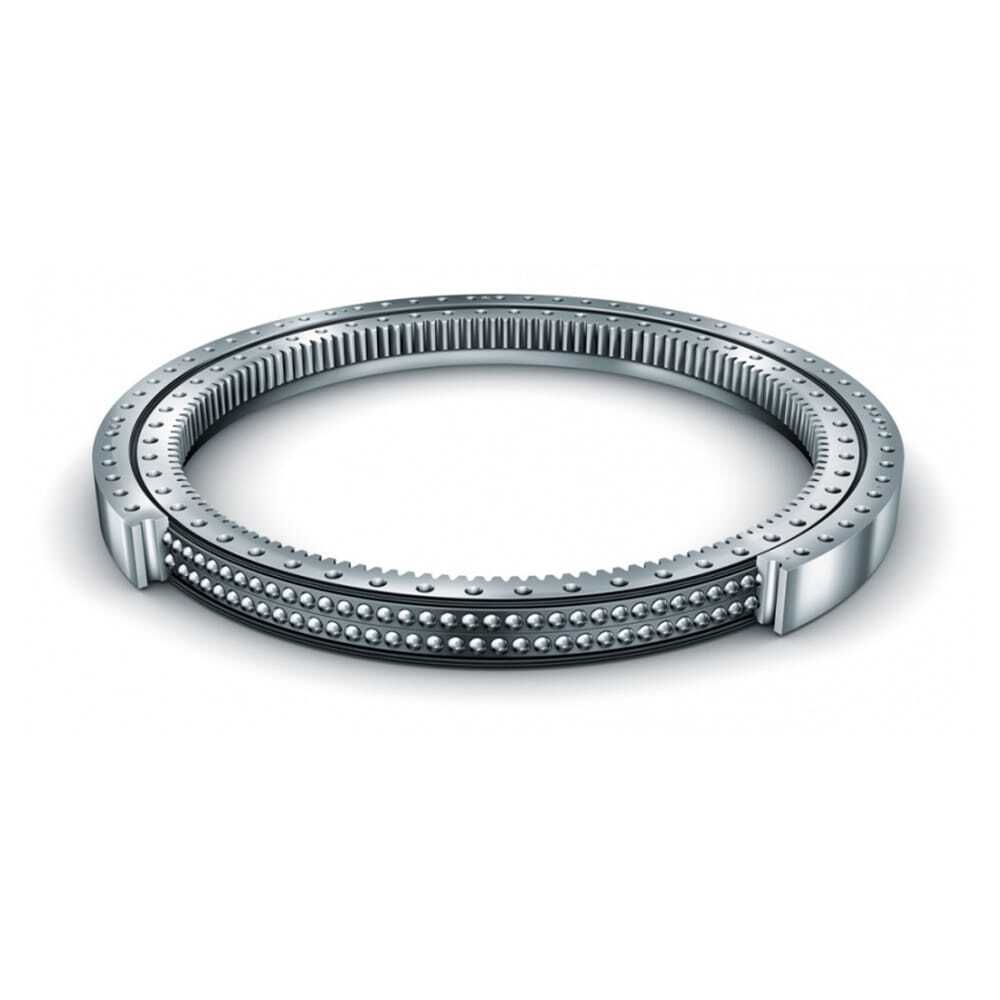Double-row Needle Roller Bearings Proved a Success
It is known thatneedle roller bearingshave low sectional height and large load capacity. They can help save space. They play a key role in a wide...

Ball bearings reduce friction between moving parts. This allows smooth movement and supports both radial and axial loads. They have balls between two rings (inner and outer). This helps evenly distribute the load, reducing wear and improving efficiency.
Choosing the right bearing type is crucial for ensuring the efficiency and reliability of mechanical systems. The correct bearing minimizes friction and reduces wear. This optimizes performance, leading to longer service life and reduced maintenance costs.
Single row ball bearings consist of a single row of balls positioned between an inner and an outer race. The balls roll smoothly along the races, reducing friction. This allows the single row ball bearings to effectively support both radial and axial loads.
Deep groove and angular contact ball bearings are used to support moderate radial and limited axial loads. Deep groove ball bearings have a higher load carrying capacity. Angular contact bearings handle axial loads in one direction, making them versatile for many applications.
Single row ball bearings are designed with one row of balls between the inner and outer races. This allows for smooth rolling motion and reduces friction. This design minimizes resistance. As a result, it makes single row ball bearings ideal for higher-speed operations where efficiency and smooth performance are essential.
Single row ball bearings are typically designed to handle moderate radial loads. They distribute the load evenly across the balls between the inner and outer races. Single row ball bearings can also accommodate minimal axial force in one direction. The balls handle light thrust loads while maintaining smooth rotational motion.
Single row ball bearings are designed for high speed capabilities. This makes them ideal for applications that require reduced friction and faster rotations. Their smooth rolling motion minimizes resistance. This ensures efficient and reliable performance in high-speed environments.
Exceeding the recommended load limits can significantly shorten the service life of ball bearings. This can lead to premature bearing failure. As a result, it can cause operational disruptions and costly repairs.
Industries like electric motors, fans, and pumps benefit from the low cost and simple design of single row ball bearings. Their easy installation and reliability help reduce costs and keep operations running smoothly.
Single row ball bearings are easy to install and require relatively low maintenance. Proper lubrication must be maintained to ensure optimal performance. This helps ensure smooth operation and extends their lifespan.
Single row ball bearings are easy to install and require relatively low maintenance. As long as proper lubrication is maintained, their performance can be optimized. This helps ensure smooth operation and extends their lifespan.
If contamination or lubricant retention is a concern, it is recommended to use sealed versions. These versions of single row ball bearings offer enhanced protection against dirt and moisture.
Shielded versions can also be used to protect the single row ball bearings and retain lubricant for longer service life. These designs help protect the bearing from dirt and moisture. Single row ball bearings also retain lubricant, ensuring longer service life and reliable performance.
Double row ball bearings feature two rows of rolling elements. This allows for a greater overall distribution of radial and axial loads. This design increases the bearing's load capacity.
It makes the bearing ideal for applications that require handling higher loads. These applications may involve more demanding conditions compared to single row bearings.
The second row of balls in double row ball bearings increases the radial load capacity. This is achieved by distributing the load across two rows. This reduces the stress on each ball.
This design also enhances the bearing’s ability to handle axial loads in both directions. It makes the bearing suitable for applications where higher load capacities and stable performance are required.
Double row designs come in deep groove or angular contact forms. Both are more rigid than single row bearings, offering better stability and performance. Double row ball bearings are especially helpful in applications that need higher load capacities.
Double row ball bearings handle heavier radial loads and higher axial loads compared to single row bearings. This makes them ideal for applications where higher load capacities and greater stability are required.
Double row ball bearings resist bending and misalignment by distributing loads across two rows of balls. This design provides extra support and stability. It makes them ideal for equipment exposed to shocks or fluctuating loads. Resilience and alignment are key for reliable performance in such conditions.
The additional row of balls in double row ball bearings helps distribute the load more evenly. This reduces deflection under pressure. This added load distribution enhances stability.
It allows the double row ball bearings to handle greater forces. As a result, the bearing has a longer service life and better performance in demanding applications.
Double row ball bearings may create a bit more friction and heat because of the extra rolling elements. However, their higher load capacity and stability are helpful, often making them better for tough applications.
Double row ball bearings may increase the weight and width of a design. This can be a constraint in tight or lightweight applications where space and weight are limited.
Correct alignment and regular inspections are important for heavy-duty bearings. They help prevent wear and misalignment. This keeps the bearing working well and avoids costly damage.
Single row ball bearings are better for high-speed use because of their simpler design and lower friction. Single row ball bearings usually have higher maximum speed ranges than double row ball bearings. Double row bearings are built for heavier loads but may have slightly more friction because of the extra rolling elements.
Double row ball bearings are favored for heavier radial or axial loads. This is because their design distributes the load across two rows of balls. This enhances load capacity and reduces stress on each ball.
This makes them better suited for applications where higher load thresholds are required. In contrast, single row bearings may struggle under heavy loads.
Environments with frequent shock loads or vibration often require bearings that can handle these forces without losing stability. Double row ball bearings offer added support and load distribution, making them ideal for such conditions. They provide enhanced durability and resistance to damage from shocks and vibrations.
Double row ball bearings may require more careful lubrication because of their increased number of contact surfaces. The extra rolling elements in the second row lead to more friction points. This makes proper lubrication essential to reduce wear, heat buildup, and ensure smooth operation over time.
It is recommended to monitor noise, temperature, and vibration periodically. This applies to both single row and double row ball bearings. This helps catch any issues early. Timely maintenance can then be performed, preventing potential failures.
Readers should assess load requirements, including both radial and axial loads, to choose the right bearing. Also, considering speed capabilities is important. Environmental conditions such as temperature, moisture, and contaminants should be taken into account before making a decision.
Space availability in machinery is crucial when selecting bearings. Double row bearings are often wider or heavier than single row bearings. This can be a constraint in designs with limited space, requiring careful consideration of bearing size and weight.
To minimize the risk of premature bearing failure, consider the operational conditions. These include factors like load, speed, and environment when determining bearing life expectations. Matching these factors with the appropriate bearing type and specifications ensures the bearing can handle the demands. This ultimately improves efficiency and extends service life.
Proper mounting and alignment of bearings are key to avoiding extra stress on the races or rolling elements. Poor installation or misalignment can create uneven load distribution. This leads to faster wear, lower efficiency, and possible bearing failure.
Proper lubrication reduces friction, heat, and wear over time. Choosing the right type and applying the correct amount are key for smooth performance. Regular maintenance helps bearings last longer.
Create a maintenance schedule to keep bearings working well. Check regularly for wear, unusual noise, or temperature changes. Documenting the findings is important to monitor the bearing's performance over time. Regular care helps prevent problems and makes the bearing last longer.
Single row ball bearings are simpler in design, offering higher speed capabilities but lower load capacity. Double row ball bearings handle heavier loads because of their two rows of balls but may have lower speed limits and slightly more friction. The choice depends on whether the application prioritizes speed or load handling.
Choose the right bearing type based on your specific needs. Consider factors such as load capacity, speed, and operating conditions. Regular maintenance is key to extending bearing service life. This includes proper lubrication and inspections to ensure reliable performance.
For further guidance, specialized products, or expert support, visit LILY Bearing. Our team is ready to assist you in selecting the best bearing solutions for your needs.

It is known thatneedle roller bearingshave low sectional height and large load capacity. They can help save space. They play a key role in a wide...

Not long ago, LYC developed a set of 16 MW platformwind power spindle bearings. The bearings beenthe largest poweredwind power spindle bearingsin...

As a major bearing manufacturer in China bearing industry, Lily Bearing is well-known for developing all sorts of sophisticated slewing bearings, one...